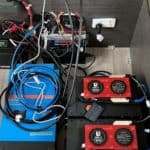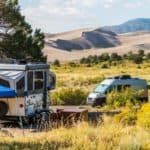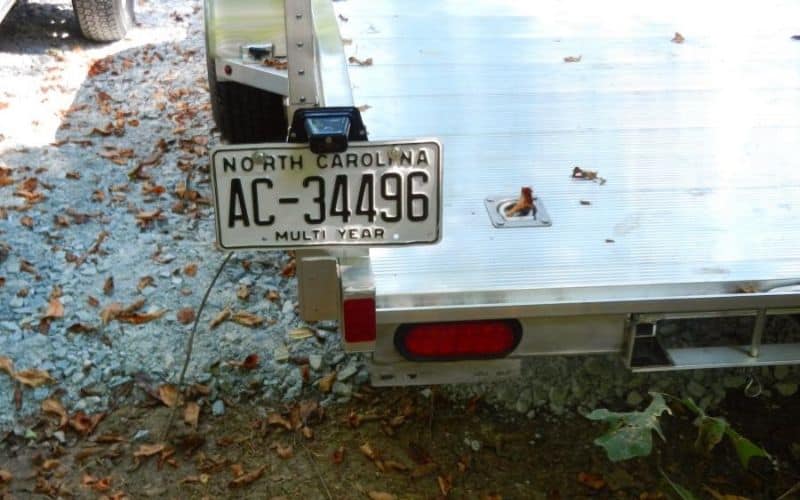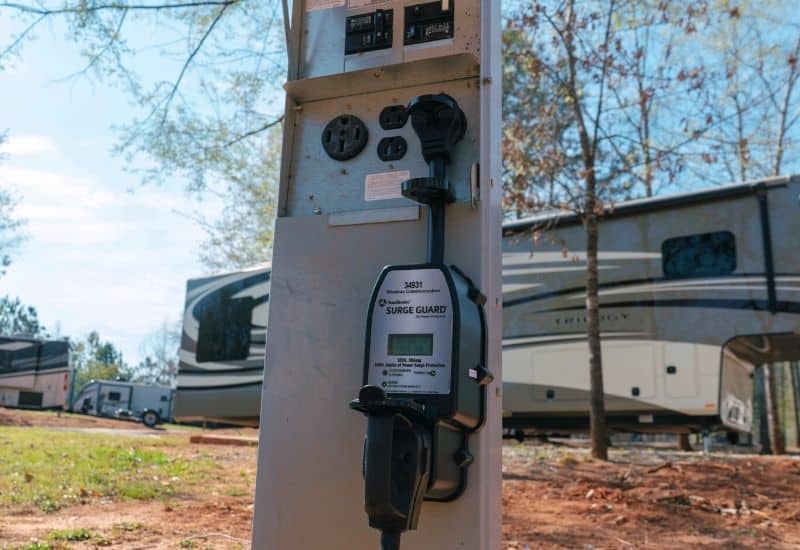Bubble, Bubble oil and trouble is a famous saying when making a witch’s brew.
Though an equally bubbling problem faced by many RV owners is seeing the telltale bubble and cracking signs of delamination.
This is an altogether different, but sinister witch’s brew of problems that affects a lot of fiberglass campers and RVs with underlayment.
If you’ve started to notice bubbles, cracks and other obvious deformations starting to affect the relationship between your RV’s shell and the interior, then you might be dealing with the early to middle stages of sinister RV delamination.
To understand your options for dealing with it, let’s examine the causes, effects, and eventually the fix for the RV sidewall delamination.
What Is RV Delamination?
Delamination is the term used to describe how an RV’s fiberglass or a gel coat layer starts to separate from the backer or underlayment material. This is usually part of a larger adhesive issue with a lightweight plywood or luan structure of the RV’s interior.
Of course, it is more common with travel trailers that have a solid fiberglass shell.
It’s worth noting that delamination is a gradual process that typically starts with a small bubble, crack or some other tiny blemish.
It can easily go unnoticed in the early stages. Though as time goes on, these delamination faults can grow larger and more problematic.
What Causes RV Delamination?
Most cases of RV delamination are related to moisture or melt water exploiting a minor flaw in a seal.
This makes them more likely to occur near windows and doors as well as unsealed roofline.
RVs that are stored outdoors through all four seasons are more likely to experience delamination that rapidly accelerates.
This is often due to the way the seals breakdown in the weather, as well as how temperature extremes can weaken the bonding power of adhesives.
Poor maintenance practices can also contribute to delamination issues. Especially if you aren’t thoroughly inspecting your RV’s seals and ports as part of your winterization process.
As time goes on the rubber and silicone in your RV’s seals can start to become brittle or flaky and peel away from the RV.
How Can I Check an RV for Delamination?
Delamination is more common in older RVs. If you have an RV that is more than five years old, or you are thinking about buying an older RV, you need to look closely for signs of delamination.
Early signs of RV delamination typically manifest as visible bubbling in the walls. Though in some cases where water has managed to infiltrate through a window or door seal, you might also see tiny cracks on the RV’s exterior.
This is most likely to appear at the end of winter or early spring after infiltrated water has had a chance to go through several freeze-thaw cycles.
These cracks are essentially stress fractures in the material. The sooner you catch this type of delamination the easier and less costly it is to repair.
How Does Delamination Affect the RV?
Delamination and water damage go hand in hand. Water that infiltrates a delaminated void can loosen existing adhesives and damage the relationship between fasteners and the surrounding structural materials.
At the same time, it also expands the void. Especially in the fall, winter, and early spring where the natural freeze-thaw effect allows the pressure of expanding ice to further the void.
Left unchecked delamination can severely damage walls and structural components of an RV’s exterior.
In some severe cases, the disassociation between the layers can cause some to release from a compromised RV while driving.
So, it’s clear that delamination isn’t just an aesthetic issue. If you don’t take steps to prevent it and repair it in the early stages it can worsen into a real-world safety issue.
How Much Does It Cost to Fix RV Delamination?
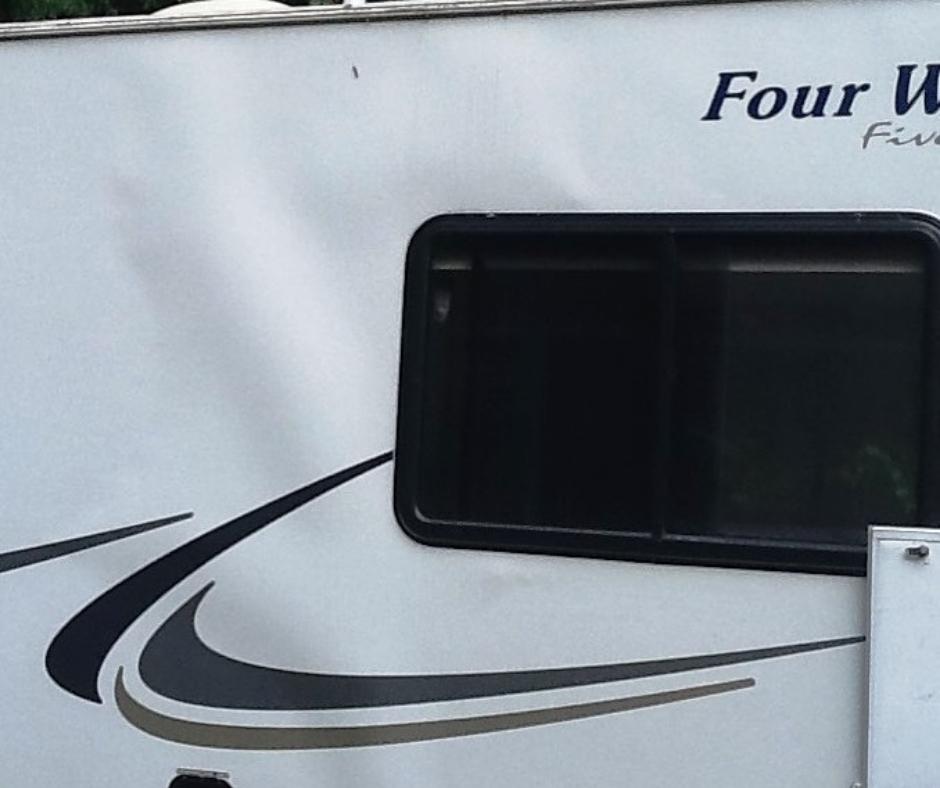
The cost to repair RV delamination depends on the severity of the damage as well as the underlying cause of the water leak.
The location will also have a major influence on the cost to fix the delamination.
If RV sidewall delamination caught early, you might be able to use one of the repair kits sold in big box hardware stores to repair a small area of delamination.
Most delamination repair kit tend to cost between $75 to $300. Though you still need to find and properly address the initial cause of the water leak, which will likely be an additional cost.
This might include things like:
How Do You Stop Delamination?
It is easier to prevent delamination than it is to repair it. This starts with simple nuts and bolts details like checking your window seals, weather stripping and roof lining for signs of brittleness.
If you do see an issue, repair it as soon as possible to prevent water from getting into the equation.
If you do notice bubbling, blisters, cracks, or other obvious signs of RV delamination, you need to take a proactive approach to get them repaired as soon as possible. Then seek out the cause of the water infiltration and repair it as well.
Professional Help For RV Delamination
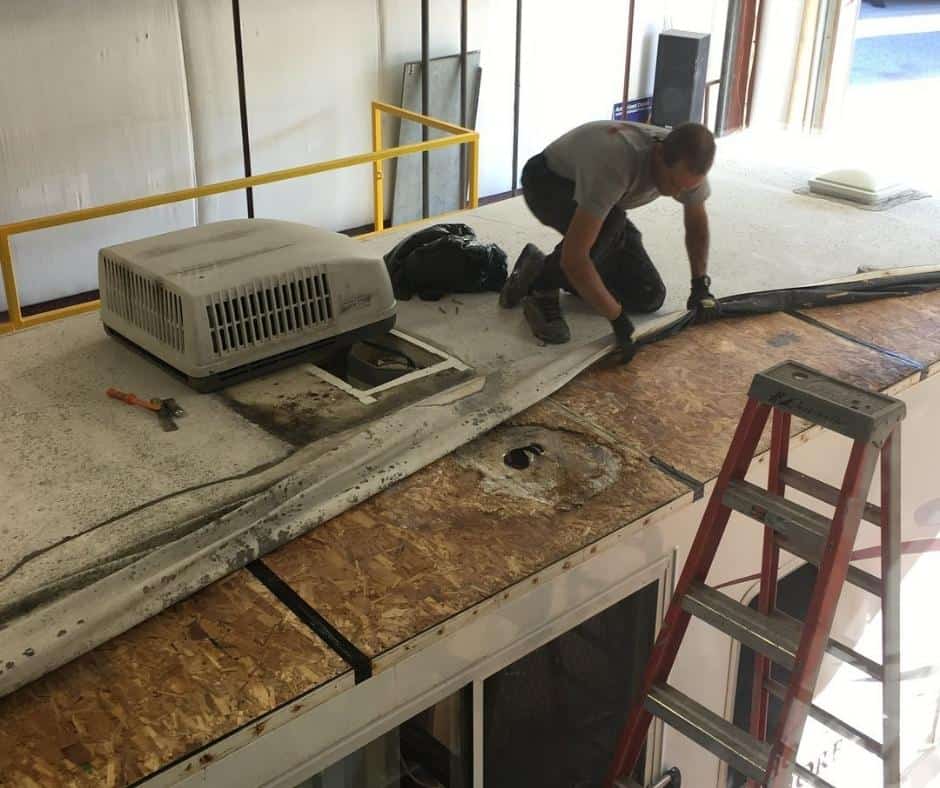
A lot of do-it-yourselfers are tempted to try to tackle RV delamination problems head-on.
Though attempting to repair anything more than a minor delamination issue can open the door to a real money-pit scenario.
Especially if you aren’t sure what caused the water leak in the first place, or you suspect a mold problem has started to develop inside the delaminated wall area.
The cost of professional repair for anything other than a minor delamination problem can pay for itself.
Not only do you get the peace of mind that comes with knowing that a trained technician is taking care of things, but you can trust their experience to spot and repair the leaks that escalated the delamination problem in the first place.
The cost to have RV delamination professionally repaired can vary from as little as $150 to $2500 depending on the severity of the problem and the necessary repairs to prevent further water leaks.
Does RV Insurance Cover Delamination Repairs?
Unfortunately, most RV insurance policies simply don’t cover the cost to repair delamination.
Worse still, a severe case of delamination to the point of it being a safety issue might even lead to a rate hike in your annual premium.
Especially if the RV is being financed and the lender requires you to carry insurance throughout the duration of the loan.
Can Delamination Cause Mold Problems In An RV?
Anytime water is involved, there is a risk of an interior mold problem. Mold loves to exploit porous materials, and all microscopic spores need to blossom into an active colony is the presence of moisture and sufficient warmth.
Even a mildly damp void in a delaminated section of the RV can be enough to support a problematic mold colony.
Conclusion
RV delamination is one of those times when a penny of prevention is worth more than a pound of repair.
Storing your RV indoors during the cold months will reduce the risk of freeze-thaw damage turning a minor case of delamination into a major one.
If you do happen to see signs of blistering, bubbles, and cracks in your RV’s walls, you need to repair it as soon as possible.
Then also bear in mind that the repair process needs to involve addressing the original water leak that started the delamination process.
For anything other than the most minor cases of delamination, you should consider calling in a professional to handle all your RV repairs.


